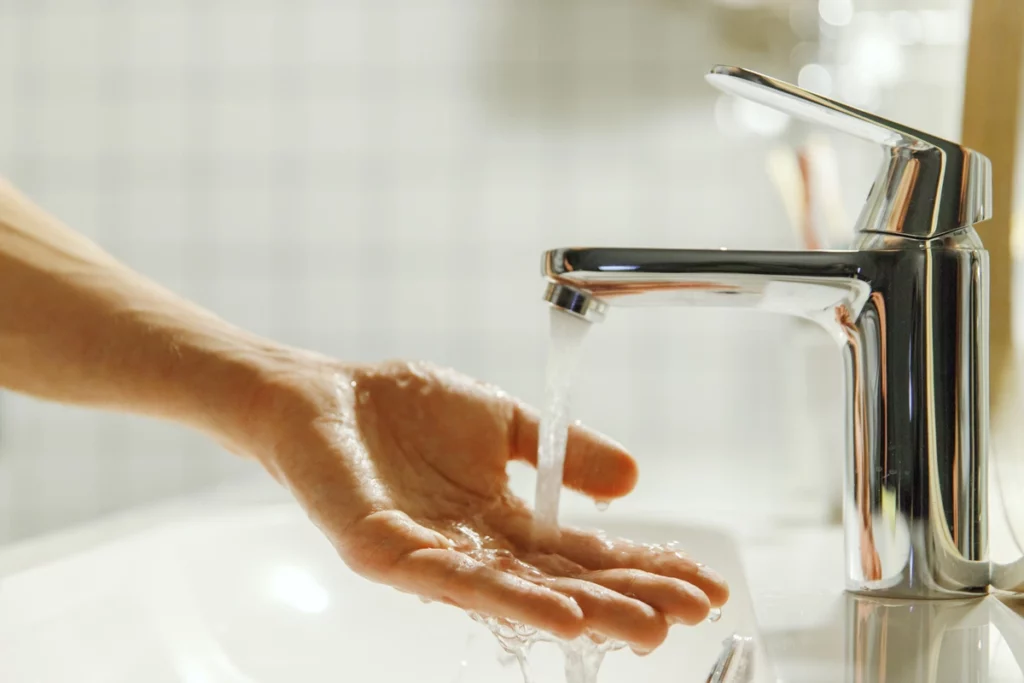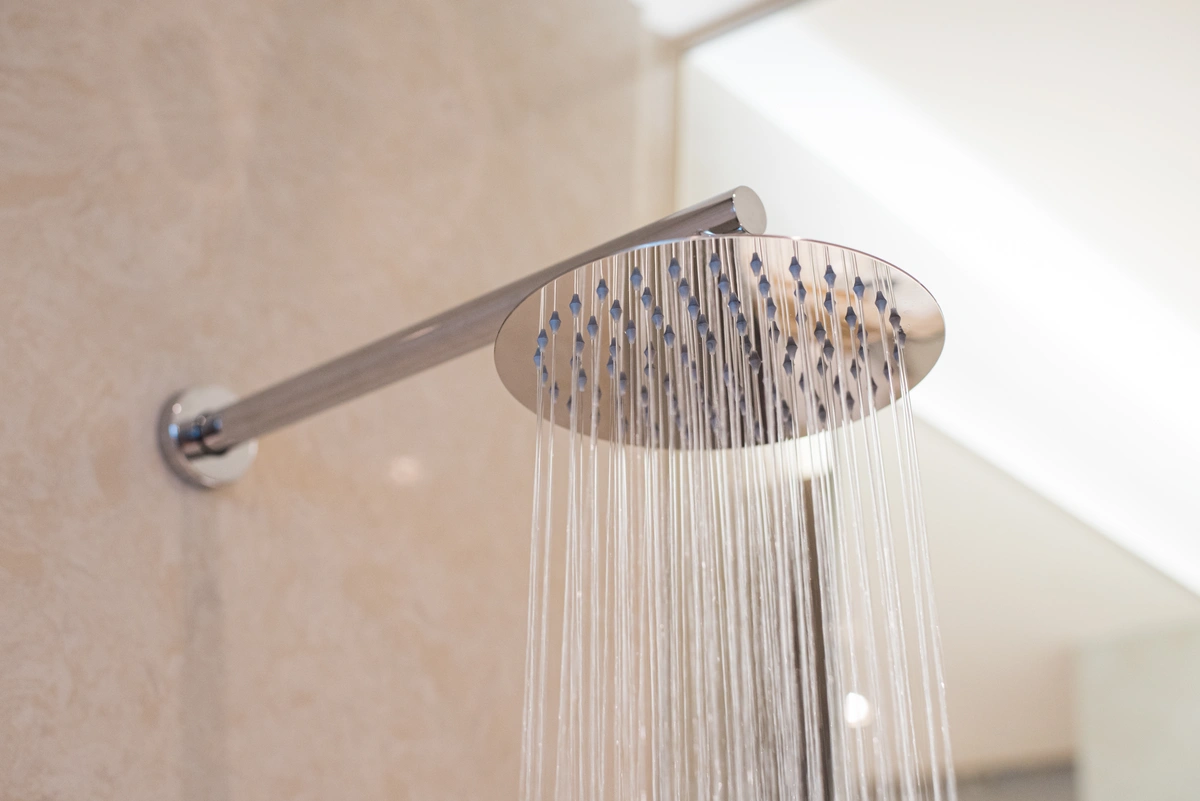Hot water is essential to our lives. We use it to wash our hands, shower, clean dishes, and do laundry. It’s a fact that every home needs running hot water at all times. But what happens when your hot water pressure seems low? Here are some reasons why you’re experiencing low hot-water pressure in your home and what you can do about it:
Low Water Pressure in the Home
If your water pressure is low, checking the gauge on your water heater is a good idea. If it’s below average, there are several reasons why this might be happening.
Causes of Low Water Pressure:
What do you do when you want to wash your hair, shower, or even fill a glass with water? You turn on the faucet. And then… nothing happens. That’s because the pipes don’t have enough pressure for water to flow.
The problem is that we use water daily, from washing our hands and brushing our teeth to flushing the toilet. When there needs to be more pressure in the pipes, it can be impossible to get enough water flowing through them for any of these primary uses.
A faulty pressure regulator can also cause low water pressure in the home. The pressure regulator maintains consistent water pressure throughout the plumbing system. If the pressure regulator is malfunctioning or broken, it can cause fluctuations in water pressure, leading to low pressure in some areas of the home. To address this issue, homeowners may need to replace or adjust the pressure regulator to ensure it functions correctly.
Clogged Pipes and Fixtures

Clogged pipes and fixtures are a common problem in many homes. They can cause inconvenience and frustration by making it difficult to perform daily tasks such as washing dishes, showering, or flushing a toilet. In this essay, we will explore the causes of clogged pipes and fixtures in the home and discuss how to fix them.
Preventing clogs from occurring in the first place is the best way to avoid the inconvenience and expense of fixing them. Homeowners can take several steps to prevent clogs, such as using drain covers to catch hair and debris, disposing of food waste properly, and avoiding flushing non-degradable items down the toilet. Regular plumbing system maintenance, such as cleaning pipes and fixtures, can also help prevent clogs.
Leaking or Broken Pipes
One of the most common causes of leaking or broken pipes is age. Over time, pipes can become corroded or worn, leading to leaks and cracks. Additionally, extreme temperatures and weather shifts can cause pipes to crack or burst. Poor installation or improper maintenance can also contribute to the problem, as can high water pressure or tree roots invading underground pipes.
Preventing leaking or broken pipes from occurring in the first place is the best way to avoid the inconvenience and expense of addressing the problem. Homeowners can take several steps to prevent leaking or broken pipes, such as maintaining proper water pressure, insulating pipes during extreme temperatures, and scheduling regular maintenance with a professional plumber.
Corroded Plumbing System Components
Corrosion in plumbing systems can cause significant damage and pose health risks for homeowners. Corrosion occurs when metal components in the plumbing system, such as pipes and fixtures, are exposed to water and air, leading to the breakdown of the metal over time.
In some cases, corrosion can also pose health risks, as it can cause lead or other toxic metals to leach into the water supply. To address corrosion, homeowners can take several steps, such as installing a water softener or pH neutralizer, replacing corroded components with non-metal alternatives, or installing a corrosion-resistant coating or lining.
Faulty Valves and Regulators

Valves and regulators are essential to any plumbing or gas system, controlling the flow and pressure of fluids or gases to ensure safe and efficient operation. When these components become faulty, it can cause many problems, from leaks and reduced efficiency to safety hazards.
Signs of Faulty Valves and Regulators:
Valves and regulators are essential components in plumbing and gas systems, regulating the flow and pressure of fluids and gases to ensure safe and efficient operation. When these components become faulty, they can cause many problems, including leaks, reduced efficiency, and even safety hazards.
One of the most common signs of faulty valves and regulators is reduced efficiency in the system. This can be caused by various issues, such as a worn valve or regulator that cannot properly regulate the flow or pressure of the fluid or gas. Reduced efficiency can also be caused by a clogged valve or regulator, leading to restricted flow and pressure.
Another sign of faulty valves and regulators is leaking in the system. Leaks can occur when valves and regulators become worn or damaged, causing fluid or gas to escape the system. This can be a severe safety hazard, particularly in gas systems, as gas leaks can cause explosions or fires.
FAQs in Relation to 8 Reasons for Low Hot Water Pressure and How to Fix it
How do you fix low hot water pressure?
Fixing low hot water pressure can be done in a few simple steps. First, check the water shutoff valve to ensure it is fully open. Next, clean or replace the aerator or showerhead, which can become clogged with mineral deposits or debris over time.
Suppose these steps do not improve the hot water pressure. In that case, the issue may be with the water heater, in which case a professional plumber should inspect it to determine the cause of the problem and the necessary repairs or replacement.
What could be the cause of low hot water pressure?
Several factors can cause low hot water pressure, including mineral buildup in the water heater or pipes, a clogged or damaged hot water valve or faucet, a faulty pressure regulator, or a leak in hot water pipes.
How can I improve my hot water pressure?

To improve hot water pressure, try cleaning or replacing the faucet aerator or showerhead to remove any mineral deposits or debris clogging it. You can also check the water shutoff valve to ensure it is fully open. If these steps do not work, you may need to call a professional plumber to inspect the water heater, pipes, and pressure regulator for any issues causing low pressure.
Conclusion
Preventing low hot water pressure can also be achieved by performing regular maintenance, such as flushing the water heater tank to remove mineral buildup, checking valves and faucets for leaks or damage, and ensuring proper installation and maintenance of pressure regulators.
By taking these steps, homeowners can enjoy a steady and reliable flow of hot water in their homes without worrying about low water pressure. Whether it’s a simple fix like cleaning a clogged faucet aerator or a more complex repair like fixing a leak in hot water pipes, addressing the causes of low hot water pressure is essential in maintaining a comfortable and efficient home.





